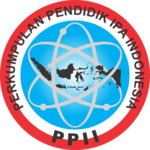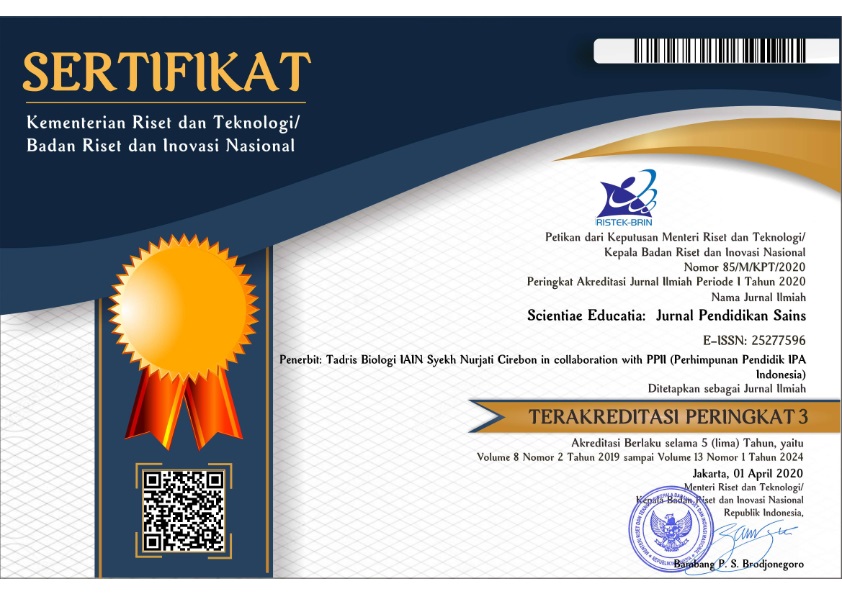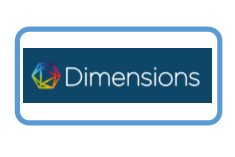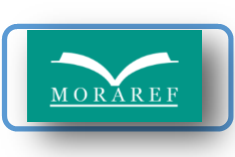Learning Biology Through the Ethnoscience-PBL Model: Efforts to Improve Students' Scientific Thinking Skills
(1) Biology Education Study Program, Department of Mathematics and Sciences, Faculty of Tarbiyah and Teacher Training, UIN Sunan Gunung Djati Bandung, Indonesia
(2) Biology Education Study Program, Department of Mathematics and Sciences, Faculty of Tarbiyah and Teacher Training, UIN Sunan Gunung Djati Bandung, Indonesia
(3) Biology Education Study Program, Department of Mathematics and Sciences, Faculty of Tarbiyah and Teacher Training, UIN Sunan Gunung Djati Bandung, Indonesia
(*) Corresponding Author
Abstract
Keywords
Full Text:
PDFReferences
Agustina, T.W., Rustaman, N.Y., Riandi., & Purwianingsih, W. (2020a). Pendekatan STREAM (Science-Technology-Religion-Engineering-Arts-Mathematics) membekalkan kebiasaan berfikir mahasiswa. Edusains, 12(2), 283-296.
Ariyatun, A., Sudarmin, S., & Triastuti, S. (2020). Analysis Science literacy competency of high school student through chemistry learning based on projects integrated ethnoscience. Journal Chemistry Education, 1(1), 1-8.
Aulia, M. R., & Hamid, A. (2021). Pengaruh pembelajaran daring terhadap keterampilan berpikir kritis menggunakan model problem based learning berbasis etnosains pada materi kesetimbangan ion dalam larutan garam. Jurnal Inovasi Pendidikan Sains, 12(2), 277–289.
Bao, L., Cai, T., Koening, K., Fang, K., Han, J., Wang, J., Liu, Q., Ding, L., Cui, L., Luo, Y., Wang, Y., li, L., & Wu, N., (2009). Learning and scientific reasoning. Science, 323(5914), 586–587.
Beneroso, D., & Robinson, J. (2022). Online project-based learning in engineering design: supporting the acquisition of design skills. Education for Chemical Engineers, 38, 38-47.
Bybee, R.W. (2013). The case for STEM education challenges and opportunities. USA : NSTA Press.
Dahm, R., Byrne, J., & Wride, M. A. (2019). Interdisciplinary communication needs to become a core scientific skill. BioEssays, 41(9), 2–4.
Damayanti, C., Rusilowati, A., & Linuwih, S., (2017). Pengembangan model pembelajaran IPA terintegrasi etnosains untuk meningkatkan hasil belajar dan kemampuan berpikir kreatif. Journal of Innovative Science Education, 6(1), 116–128.
Dewi, C. A., Erna, M., Martini, Haris, I., & Kundera, I. N. (2021). Effect of contextual collaborative learning based ethnoscience to increase student’s scientific literacy ability. Journal of Turkish Science Education, 18(3), 525–541.
Fachrurazi. (2011). Penerapan pembelajaran berbasis masalah untuk meningkatkan kemampuan berpikir kritis dan komunikasi matematis siswa sekolah dasar. Jurnal Penelitian Pendidikan UPI, Edisi Khus(1), 76–89.
Fitriyanti, F., F, F., & Zikri, A. (2020). Peningkatan sikap dan kemampuan berpikir ilmiah siswa melalui model PBL di sekolah dasar. Jurnal Basicedu, 4(2), 491–497.
Hake, R. (1999). Analyzing change/ gain score. Indiana: Indiana University
Herzon, H. H., & Utomo, D. H. (2018). Pengaruh Problem-Based Learning ( PBL ) terhadap keterampilan berpikir kritis. Jurnal Pendidikan, 3(1), 42–46.
Imaningtyas, C. D., Suciati, & Karyanto, P. (2018). Identifikasi kemampuan berpikir ilmiah siswa kelas XI. Seminar Nasional Pendidikan Fisika, 323(1), 586–587.
Kemdikbud. (2013). Kurikulum 2013 Kompetensi Dasar Sekolah Menengah Atas (SMA)/ Madsarah Aliyah (MA). Jakarta : Kementrian Pendidikan dan Kebudayaan.
Khabibah, E. N., Masykuri, M., & Maridi, M. (2017). The effectiveness of module based on discovery learning to increase generic science skills. Journal of Education and Learning (EduLearn), 11(2), 146–153.
Khoiri, A., Kahar, M. S., & Indrawati, R. T. (2018). Ethnoscience approach in Cooperative Academic Education Programs (COOP). Journal of Physics: Conference Series, 1114(1).
Khoiriyah, A. J., & Husamah, H. (2018). Problem-based learning: Creative thinking skills, problemsolving skills, and learning outcome of seventh grade students. Jurnal Pendidikan Biologi Indonesia, 4(2), 151–160.
Khun, D. (2010). What is Scientific thinking and how dows it develop? (Second Edition). Blackwell Publishing.
Kim, N. J., Vicentini, C. R., & Belland, B. R. (2022). Influence of scaffolding on information literacy and argumentation skills in virtual field trips and problem-based learning for scientific problem solving. International Journal of Science and Mathematics Education, 20(2), 215-236.
Majid, A. (2013). Strategi pembelajaran. Bandung: PT Remaja Rosdakarya.
Malik, A., & Ubaidillah, M. (2020). Students critical-creative thinking skill: A multivariate analysis of experiments and gender. International Journal of Cognitive Research in Science, Engineering and Education, 8(S), 49-58.
Malik, A., & Ubaidillah, M. (2021). Multiple skill laboratory activities: How to improve students’ scientific communication and collaboration skills. Jurnal Pendidikan IPA Indonesia, 10(4), 585-595.
Marleni, L. (2016). Faktor-Faktor yang mempengaruhi minat belajar siswa. Journal Cendekia: Jurnal Pendidikan Matematika, 1(1), 149–159.
Nabilah, W., Sudibyo, E., & Aulia, V. (2022). Foster student’s science literacy skills on environmental pollution topics through the etnoscience approach. Jurnal Pijar Mipa, 17(3), 387–393.
National Research Csouncil (NRC). (2011). Successful K-12 STEM Education : Identifying Effective Approaches in Science, Technology, Engineering, and Mathematics. Washington DC: National Academies Press.
National Research Council (NRC). (2012). A framework for K-12 science education: practices, crosscutting concepts, and core ideas. USA : National Academies Press.
Nazila, L., Rosidin, U., Distrik, I., Herlina, K., & Hasnunidah, N. (2019). The effect of applying argument driven inquiry models to the critical thinking skills of students based on gender differences. Scientiae Educatia: Jurnal Pendidikan Sains, 8(1), 35-50.
Nisa, A., Sudarmin, & Samini. (2015). Efektivitas penggunaan modul terintegrasi etnosains dalam pembelajaran berbasis masalah untuk meningkatkan literasi sains siswa. Unnes Science Education Journal, 4(3), 1049–1056.
Nurdiyansyah, & Fariyatul. (2013). Inovasi model pembelajaran sesuai kurikulum. Sidoarjo : Nizami Learning Center.
Partnership for 21ST Century Skills. 2009. P21 Framework Definitions. Retrieved from https://files.eric.ed.gov.
Patricia, N., Sumarni, W., & Mursiti, S. (2022). Analysis of students’ critical and creative thinking skills on the application of a Problem-Based Learning Model Contained with Etno- Science (Etno-PBL). International Journal of Active Learning, 7(1), 77–85.
Purba, E., Sinaga, B., Mukhtar, M., & Surya, E. (2017). Analysis of the difficulties of the mathematical creative thinking process in the application of problem based learning model. 104(Aisteel), 265–268.
Purnamasari, S., Marpuah, S., & Sunaryo, I. (2021). Pendekatan etnosains melalui model problem based learning terhadap kemampuan literasi kimia materi larutan penyangga the use of ethnoscience approach through problem based learning on chemical literacy of buffer solutions topics. Jurnal of Basic Education, 2(1), 9–18.
Putri, A., Sudarisman, S., & Ramli, M. (2014). Pengaruh model problem based learning berbasis potensi lokal pada pembelajaran biologi terhadap kemampuan literasi sains siswa kelas X SMA Negeri 1 Cepogo. Bio-Pedagogi, 3(2), 81-94.
Rahmawati, Y., Ridwan, A., Hadinugrahaningsih, T., & Soeprijanto. (2019). Developing critical and creative thinking skills through STEAM integration in chemistry learning. Journal of Physics : Conference Series. 1156.
Ramandanti, S. K., & Supardi, K. I. (2020). Pengaruh model problem based learning terintegrasi etnosains terhadap pemahaman konsep materi redoks. Journal of Chemistry in Education, 9(1), 16–22.
Retnowati, S., Riyadi, & Subanti, S. (2020). The STEM approach: The development of rectangular module to improve critical thinking skill. International Online Journal of Education and Teaching (IOJET), 7(1). 2- 15.
Roviati, E., Widodo, A., Purwianingsih, W., & Riandi, R. (2019). Development of argumentation-based critical thinking skills tests in microbiology laboratory. Scientiae Educatia: Jurnal Pendidikan Sains, 8(1), 76-87.
Rudibyani, R. B. (2019). Improving students’ creative thinking ability through problem based learning models on stoichiometric materials. Journal of Physics: Conference Series, 1155(1).
Rudolph, J.L. & Horibe, S. 2016. What do we mean by science education for civic engagement. Journal of Research in Science Teaching, 4(5):15-25.
Sartika, R. P. (2015). Respon Siswa terhadap pembelajaran menggunakan model siklus belajar 5E berbantuan multimedia pada materi koloid. Jurnal Visi Ilmu Pendidikan, 6(3), 1420–1430.
Suciyanti, A. (2021). Integration of ethnoscience in problem-based learning to improve contextuality and meaning of biology learning. Biosfer: Jurnal Pendidikan Biologi, 14, 201–2015.
Sudarmin, S., Sumarni, W., Azizah, S. N., Yusof, M. H. H., & Listiaji, P. (2020). Scientific reconstruction of indigenous knowledge of batik natural dyes using ethno-STEM approach. Journal of Physics: Conference Series, 1567(4).
Sumarni, W., Rumpaka, D. S., Wardani, S., & Sumarti, S. S. (2022). STEM-PBL- local culture : Can it improve prospective teachers ’ problem -solving and creative thinking skills. Jounal Innovation in Education and Culture Research, 3(1), 70–79.
Temuningsih. (2017). Pengaruh Penerapan model problem based learning berpendekatan etnosains pada materi sistem reproduksi terhadap kemampuan berpikir kritis siswa. Journal of Biology Education, 6(1), 70–79.
Thaniah, & Diliarosta. (2020). Identification of ethnosains and local awareness about traditional jamu in Muara Putus, Agam District. Journal of Science Education and Teaching, 3(2), 108–112.
Thomas, I. (2009). Critical thinking, transformative learning, sustainable education, and problem based learning in universities. Journal of Transformative Education, 7(3), 245–264.
Ulger, K. (2018). The effect of problem-based learning on the creative thinking and critical thinking disposition of students in visual arts education. Interdisciplinary Journal of Problem-Based Learning, 12(1), 3–6.
Umar, M., & Ko, I. (2022). E-Learning: Direct effect of student learning effectiveness and engagement through project-based learning, team cohesion, and flipped learning during the COVID-19 Pandemic. Sustainability, 14(3), 1724.
Wahyu, Y. (2017). Pembelajaran berbasis etnosains di sekolah dasar. Jurnal Inovasi Pendidikan Dasar, 1(2), 140–147.
Yohana, I., Sudarmin, Wardani, S., & Mohyaddin, S. N. B. (2018). The generic science skill profile of fourth grade students on acid and base topic in guided inquiry learning model. International Journal of Active Learning, 3(2), 110–116.
DOI: 10.24235/sc.educatia.v11i2.11229
Article Metrics
Abstract view : 11 timesPDF - 5 times
Refbacks
- There are currently no refbacks.
Scientiae Educatia: Jurnal Pendidikan Sains indexed by:

This work is licensed under a Creative Commons Attribution 4.0 International License.
Stat Counter (Link)



1.png)












